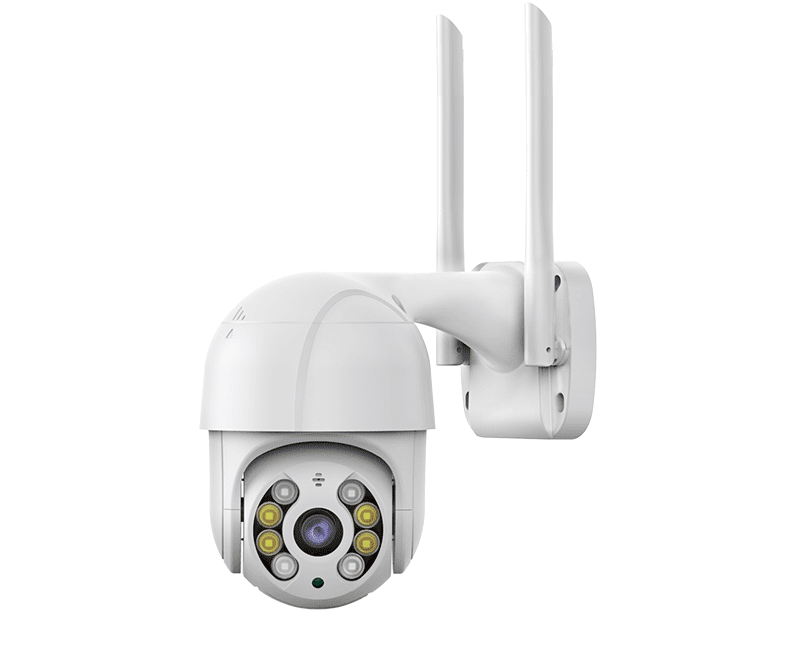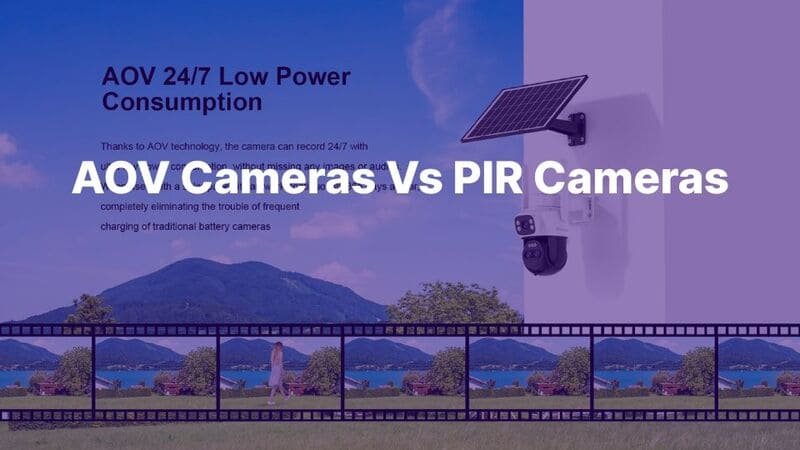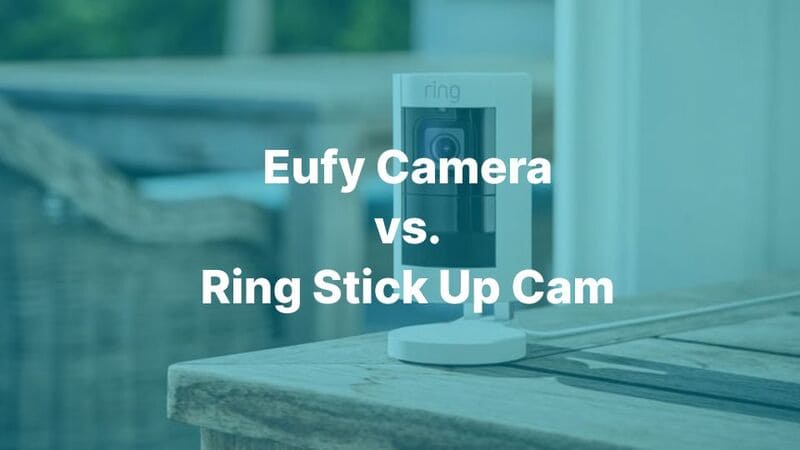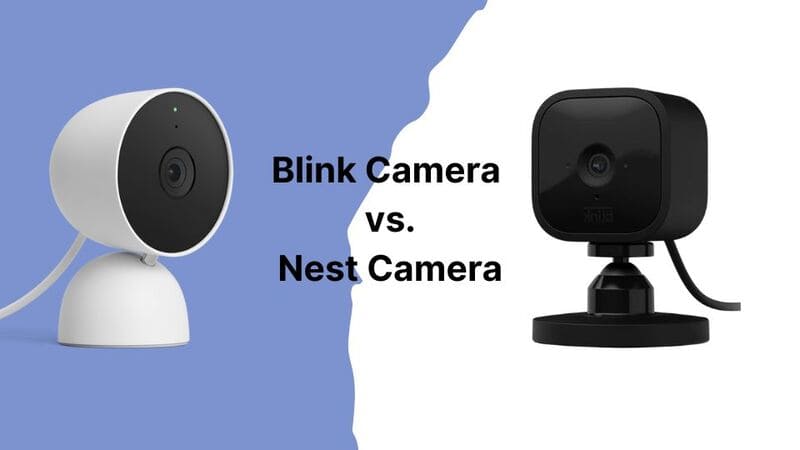Always On Video (AOV) and Passive Infrared (PIR) cameras represent two distinct approaches to security monitoring, each with unique strengths and limitations. While PIR cameras dominated the market for decades with their energy-efficient, motion-triggered design, AOV cameras are redefining expectations with AI-powered 24/7 recording, solar sustainability, and unmatched detection accuracy. This analysis delves into their technical frameworks, real-world performance, and long-term viability, revealing why industries and homeowners increasingly favor AOV for high-stakes environments. From thwarting thefts to resolving legal disputes, discover how next-gen surveillance balances uninterrupted coverage with smart resource management—and why settling for partial visibility could prove costly in critical moments.

What is an AOV Camera?
Always On Video (AOV) cameras are solar-powered security systems designed for nonstop 24/7 monitoring. Unlike motion-triggered PIR cameras, AOV records continuously but uses adaptive frame rates (e.g., 1 frame/2s during inactivity) to conserve power and storage.
Core Features
- AI-Powered Detection: Replaces traditional sensors with image-based recognition, identifying humans, vehicles, and behaviors (e.g., trespassing) with 99% accuracy and up to 30m range.
- Energy Efficiency: Ultra-low power components (40mW idle) and solar compatibility (8W panels + 32Wh batteries) enable 7+ days off-grid operation.
- Smart Storage: Adaptive recording cuts storage needs by 5x vs. continuous recording.
- 4G/Weatherproof: Real-time alerts via 4G and rugged designs for harsh environments.
What is a PIR Camera?
Passive Infrared (PIR) cameras detect motion by sensing heat emitted by humans/animals. They activate only when infrared radiation changes, avoiding constant recording.
How It Works
- Heat-Based Triggers: Detects temperature shifts (e.g., a person walking) within a 15–20m range and 90° field.
- Energy-Saving: Stays dormant until triggered, ideal for battery-powered setups.
Pros & Limits
- ✔️ Fewer False Alarms: Ignores non-heat movements (wind, shadows).
- ❌ Blind Spots: Misses slow/distant motion (e.g., crouching intruders).
- ❌ No Pre-Recording: Fails to capture events before triggers (e.g., quick thefts).

AOV Cameras Vs PIR Cameras: How They Differ
1. Technical Principles and Operation Modes
2. Detection Capabilities
3. Power Efficiency and Recording
4. Performance Characteristics
5. Visual Performance
6. Practical Application
| Feature | AOV Cameras | Traditional PIR Cameras |
|---|---|---|
| Recording Mode | Continuous (low fps unless active event) | Event-triggered only |
| Event Detection | AI-based, real-time analysis, humanoid/object | Motion/heat (PIR) only |
| Power Management | Low-power standby, solar & battery optimization | Low-power sleep until triggered |
| Storage Use | Efficient (condensed video, event prioritization) | Less efficient, potential event gaps |
| Coverage | 24/7 with no gaps | Partial, based on PIR triggers |
| Setup Complexity | More advanced, sometimes app/cloud integration | Simpler, fewer features |
If you use settings like a 60-second AOV interval and 300 seconds of normal detection video each day with IR night vision, AOV cameras provide great coverage while saving power. In my opinion, this makes them an excellent choice for security at your home or business. I recommend them if you need something that is both reliable and efficient.
Features and Capabilities of AOV Cameras
AI-Driven Event Detection
AOV (Always-On Video) cameras utilize advanced AI to detect and classify objects beyond basic motion sensing. These systems identify humans, vehicles (including EVs, excavators, and tankers), and specific behaviors such as unauthorized smoking or safety violations (e.g., missing helmets/masks). With 99% detection accuracy and a 30-meter range, AOV outperforms traditional PIR systems prone to false alarms from wind, animals, or temperature shifts.
Smart Storage & Energy Efficiency
AOV cameras optimize storage through adaptive recording: low-frame-rate snapshots during inactivity switch instantly to full-frame video upon AI-triggered events. This reduces storage consumption by 5x compared to continuous recording, extending SD card lifespan. Solar-powered models integrate 32Wh batteries and 8W panels, sustaining 7+ days of operation in low-light conditions—ideal for remote sites.
Enhanced Visuals & Real-Time Response
Equipped with dual-lens PTZ, 2K+ resolution, and low-light sensors (0.0005 Lux), AOV cameras deliver full-color night vision without auxiliary lighting. Built-in white lights and two-way audio enable real-time intervention, while cloud/SD hybrid storage ensures data resilience during outages.
Seamless Integration & Reliability
AOV systems sync with mobile apps for instant alerts, live streaming, and rapid event playback. Their immunity to environmental interference and extended detection range make them a scalable solution for industrial safety, urban surveillance, and off-grid monitoring.
PIR Security Cameras: Limitations & Risks
1. Narrow Detection Scope
PIR sensors activate only via infrared heat changes, typically detecting motion within a 90° field and 15–20m range. In practice, many consumer models reliably sense movement only up to 4.5m (15 ft), leaving wide-angle camera views partially unmonitored unless motion occurs within the sensor’s limited zone.
2. Environmental Interference
Temperature fluctuations (e.g., HVAC drafts, sunlight) frequently cause false alarms or missed detections. Passive infrared technology cannot distinguish humans from animals or objects, resulting in a 30–40% false alert rate in outdoor deployments.
3. Critical Coverage Gaps
- No pre-recording buffer: Rapid movements or delayed triggers lead to incomplete event capture (e.g., partial thefts).
- Missed subtle motions: Slow-moving subjects or small thermal signatures (e.g., crouching intruders) often evade detection.
- Evidence failures: A Queen’s University study documented 168 PIR system failures in criminal trials due to unrecovered footage.
4. Cost-Reliability Trade-off
While PIR cameras remain popular for low-cost, battery-powered setups, their inherent design limitations—prioritizing price over precision—make them unsuitable for high-security scenarios requiring uninterrupted, actionable evidence.
Why Always On Video Camera Is the Future (vs. PIR Camera)
1. Uncompromised Surveillance Coverage
AOV systems eliminate blind spots by recording continuously, capturing subtle or slow-moving events (e.g., loitering, package thefts) that PIR sensors often miss. In critical scenarios like the Boston Marathon bombing, AOV footage enabled rapid suspect identification—a feat unlikely with PIR’s motion-triggered gaps. Studies link 24/7 surveillance to 20% reductions in public crime rates, as perpetrators avoid risks of being recorded.
2. AI-Driven Precision & Efficiency
- Smarter Detection: Real-time object recognition (humans, vehicles) and behavior analysis (e.g., trespassing) reduce false alarms by 90% compared to PIR’s heat-based triggers.
- Storage Optimization: Adaptive frame rates (0.5–15 fps) and AI-triggered full-resolution recording cut storage needs by 5x vs. continuous recording.
- Energy Resilience: PoE-powered AOV systems avoid battery dependency, while solar hybrids sustain 7+ days offline—ideal for remote sites.
3. Proactive Security & Cost Savings
- Preventive Deterrence: Retailers using AOV report 35% fewer thefts due to visible, always-active monitoring.
- Faster Response: Real-time alerts with contextual analytics (e.g., “person detected at rear gate”) slash incident response times by 50%.
- Labor Efficiency: Automated anomaly detection reduces manual review workloads by 70%, per industry case studies.
4. Future-Ready Technology
AOV integrates with 5G, edge computing, and smart city infrastructure, enabling:
- Instant cloud backups with <1s latency.
- Predictive analytics (e.g., crowd behavior forecasting).
- Scalability for large deployments without compromising performance.
AOV cameras outperform PIR systems with AI-powered 24/7 monitoring, 30-meter detection, and solar efficiency—eliminating blind spots, false alarms, and missed events. Ideal for homes, businesses, and industrial sites, they capture critical details like license plates and slow-moving intruders while reducing storage needs by 5x. While PIR suits basic budgets, AOV’s adaptive recording and cloud integration future-proof security investments in high-stakes scenarios.
As China’s leading AOV camera manufacturer, ICSEECAM simplifies bulk purchasing and custom solutions for global buyers. Elevate your security with reliable, solar-ready AI surveillance. Contact us today at info@icseecam.com to streamline your AOV CCTV procurement—ensuring quality, affordability, and 24/7 protection tailored to your needs.






